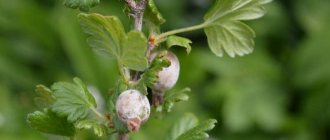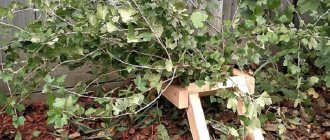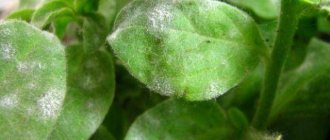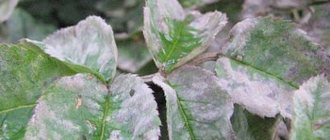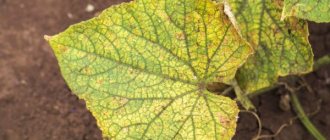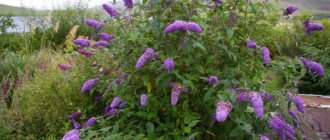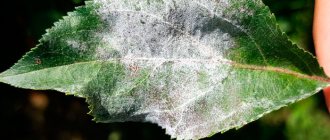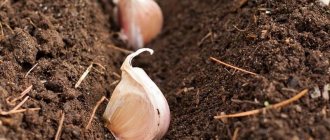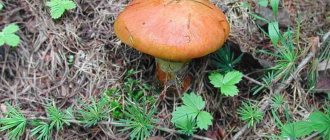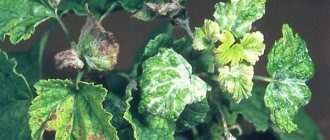Reasons for appearance
There may be several causes for this disease:
- When warm, humid weather persists for a long period of time, ideal conditions are created for fungi to reproduce. Therefore, in such weather, roses often suffer from black spotting.
- If the rose bush grows in a low area or in a very dense place, then the risk of this disease also increases. Indeed, in such places, air circulation is slowed down, and moisture does not evaporate as actively.
- The reason may be improper feeding, its lack or excess.
- One of the reasons is the lack of calcium in the soil where the bushes grow.
Important! Spores of the black spot fungus are spread by wind, water or insects, so it is important to cure the diseased plant in order to prevent disease in other bushes.
Varieties of roses resistant to black spot - photo gallery
Variety Sympathie - winter-hardy rose, often grown as a climbing rose
Variety Augusta Louise - profusely blooming hybrid tea rose
Westerland variety - the best bush rose
Yankee Doodle variety - hybrid tea rose with flowers that change shade
Variety Lawinia - a gorgeous climbing rose with drooping flowers
Winchester Cathedral variety - the best white rose
Variety Friesia - low bright floribunda
Hansaland variety - a beautiful rose for a hedge
Leonardo da Vinci variety blooms all summer and is rain resistant
Variety Aspirin - a magnificent miniature rose, does not suffer from anything
Only with strict adherence to preventive measures and the correct choice of varieties will it be possible to avoid black spotting on roses.
- Author: Natalia Bliznyuk
Hello! My name is Natalia. I live on land with a vegetable garden, a garden and seven cats. I have been growing plants since childhood. I started with cacti, then became interested in flowers, medicinal herbs and vegetables. Rate this article:
- 5
- 4
- 3
- 2
- 1
(62 votes, average: 3.9 out of 5)
Share with your friends!
Signs and symptoms of bush damage
Typically, spotting appears in the second half of summer. It is not uncommon for several outbreaks of the disease to occur in one season. Leaves and young shoots of bushes suffer.
When infected, gardeners may observe the following symptoms:
- stopping the growth and development of the plant;
- the appearance of dark spots on the foliage that increase in size and number;
- the spots are sun-shaped;
- spots merge with each other over time;
- the disease occurs starting from the lower parts of the bush and gradually moves upward;
- foliage with spots begins to turn yellow, curl and crumble;
- bushes become much rarer;
- the number of flowers decreases.
Means and technology for treating rose bushes
After the gardener is convinced that the bushes are affected by this particular disease, it is necessary to begin treatment with drugs.
"Skor"
This is a complex fungicide with a pronounced therapeutic effect and a long-lasting preventive effect in the fight against fungal infections. After just 2 hours, the active substance spreads throughout the entire vascular system of the bush and begins to act.
A significant advantage of this drug is the ability to process it at any phase of plant development. "Skor" is sold in the form of an emulsion concentrate, packaged in ampoules or bottles.
To treat black spot, the drug is diluted at the rate of 5 ml per 10 liters of water. The fungicide is first dissolved in a small amount of warm water and then gradually adjusted to the required volume. The solution is prepared immediately before treatment.
See also
Description of the Cordana rose variety, planting and care, propagation at homeRead
"Abiga Peak"
This fungicide is used to combat fungal and bacterial diseases of all types of plants. When processed, it adheres evenly and tightly to the surface of the plants. Remains on the bushes for a long time, thereby protecting them even in unfavorable conditions. The active ingredient of the drug can work even at low temperatures.
To spray roses, the drug in an amount of 40-50 ml is dissolved in 10 liters of water. First, the medicine is dissolved in a small volume of water, and then brought to 10 liters. The prepared solution should be used within 24 hours.
Spraying is carried out twice, in the morning or evening. The break between treatments should be 2-3 weeks.
"Ridomil Gold"
The fungicide "Ridomil Gold" is used to get rid of various types of fungus, including the one that causes black spotting. When treated with this drug, a kind of protective film appears on the leaves and stems of rose bushes, destroying the fungus. "Ridomil Gold" is effective at any stage of the disease.
To prepare a working solution, you need to dissolve 25 g of the substance in 10 liters of water. Immediately after complete dissolution of the drug, treatment can begin. After just half an hour, the treated plants can be watered. Even prolonged rains will not wash away the medicine. Treatment is carried out 3-4 times per season.
This fungicide is safe for all plants, but its remains should not be poured into water bodies. This will have a detrimental effect on their residents.
Bordeaux liquid
Bordeaux mixture is a mixture of slaked lime and copper sulfate. Effectively fights fungal plant diseases. It is not only a fungicide, but also a bactericide. Among all fungicides it has the highest adhesion.
The prepared solution has a sky blue color with a neutral or slightly alkaline reaction. A highly alkaline solution will not adhere well to plants, and therefore will be ineffective.
Bordeaux mixture is used to treat rose bushes in early spring, and the soil around the plant is also sprayed. To do this, dilute 200-300 g of the mixture in a bucket of water. In the summer, the treatment is repeated 3-4 times at intervals of 7-10 days, diluting 100 g of Bordeaux mixture in a bucket of water.
"Previkur Energy"
The fungicide has a protective and growth-stimulating effect. Within an hour after treatment, the active substance completely saturates the plant. Its protection extends not only to treated rose shoots, but also to new leaves and shoots. Increases the immune system of bushes and their resistance to fungal infections.
To prepare a working solution, dilute 15 ml of fungicide in 10 liters of water.
"Topaz"
This is a systemic fungicide that is used for the treatment and prevention of fungal diseases. Its effect lasts from 14 to 18 days from the date of processing.
The product can stop the development of the disease within 2-3 hours after spraying the bushes. It can be combined with other drugs to achieve comprehensive protection for roses.
One of the advantages of Topaz is its economical consumption. For 10 liters of water you will need only 4 ml of the drug. Prepare the product before use and use it all at once. Treatment is carried out in the morning or evening in calm weather.
See also
Description and characteristics of roses of the Niccolo Paganini variety, planting and care rulesRead
"Profit Gold"
This fungicide contains, in addition to the active substance, manganese and zinc. These microelements improve the functioning of enzymes.
Used to treat roses and provide long-term protection against further infections. To prepare the solution, you will need 4 g of medicine; they are diluted in 10 liters of water.
When working with the drug, you should be careful, as it is quite toxic to people and animals..
Preventive actions
In order to avoid or at least reduce the risk of black spot disease, you need to take certain preventive actions.
Optimal growing conditions
Before planting rose bushes on your site, you need to think not only about where they will look more beautiful, but also about where they will be safer:
- bushes should be planted in areas well warmed by the sun;
- the soil should be light and not retain moisture;
- Water should not accumulate under the bush;
- Roses should not be planted too closely to each other or to other plants;
- produce moderate watering.
External inspection of the bush
It is important to periodically inspect the bushes. After all, a disease detected in time will make it possible to quickly get rid of it and prevent it from spreading.
Removing weeds and loosening the soil
Timely removal of weeds will reduce the spread of pathogens and allow the sun's rays to better warm the soil. Loosening the soil under the bushes also helps dry the soil and allows oxygen to reach the roots of the bushes.
Feeding rationing
It is necessary to feed rose bushes, but you must adhere to certain standards. Feeding with potassium is carried out from spring until autumn. The first feeding is carried out at the end of May, the second - at the beginning of June, the third - at the end of July, then - in mid-August and early September.
Fertilizing with liquid means is carried out only at the root. Treatment should not be carried out in the evening or at night.
Treatment for diseases and insects
Such treatments must be carried out in a timely manner, since diseases and insect attacks significantly reduce the immunity of roses. And in the future, the bushes become more vulnerable to black spot and other fungi.
Pruning in a timely manner
Affected shoots should be immediately removed immediately after the bushes open from wintering. Trim them to healthy tissue. The sections are treated with garden varnish.
Disinfect the tool
After each cut pink branch, the pruning shears are treated with alcohol, vodka or a strong solution of potassium permanganate. Other alcohol-containing or chlorine-containing solutions will also work.
In autumn, remove dry leaves and dig up the soil
In autumn, it is necessary to remove dry leaves; they can become a hiding place for pests and fungal spores. They also remove the top layer of soil and dig up the area around the bushes. Leaves and removed soil should not be sent to the compost heap, so as not to contaminate it. Better to burn them.
What is black spotting
This disease is widespread in all countries on all continents and can occur in hot, dry climates as well as in colder, wetter regions. The causative agent of the disease is the fungus Marssonina rosae, whose spores hide in infected foliage and stems during the winter and can travel with drops of moisture or with the wind.
With the onset of the warm season, spores begin to actively move from their habitat, falling with raindrops or gusts of wind onto rose shoots and their flowers.
Important!
The first symptoms of rose black spot disease may appear from the first ten days of June to the first ten days of July.
This disease primarily affects weakened shrubs. However, already from the first ten days of August the disease is transferred to stronger rose bushes.
During the season, black spot may appear on plants again, and the fight against it has to be started all over again.
